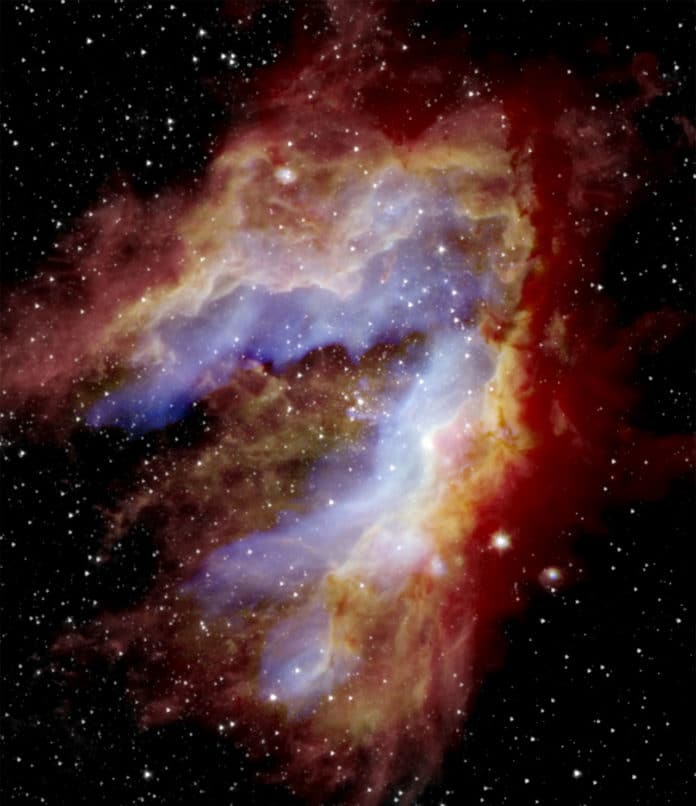The Omega Nebula, also known as the Swan Nebula- located in the rich starfields of the Sagittarius area of the Milky Way, is one of the brightest and most massive star-forming regions in our galaxy. Recently, NASA‘s airborne telescope, SOFIA, captured a new image of Swan nebula that will allow scientists to chronicle the history and evolution of this well-studied nebula.
The center of the nebula is filled with over 100 of the galaxy’s most massive young stars. These stars, according to scientists, maybe many times the size of our Sun. As the center is exceptionally bright, the detectors on space telescopes were saturated at the wavelengths SOFIA studied, similar to an over-exposed photo.
SOFIA’s infrared camera called FORCAST, however, can pierce through these cocoons. The image reveals nine protostars, areas where the nebula’s clouds are collapsing and creating the first step in the birth of stars, that had not been seen before. Scientists also calculated the ages of the nebula’s different regions and found that all different areas formed at different times, but took shape over multiple eras of star formation.
Jim De Buizer, a senior scientist also at the SOFIA Science Center, said, “This is the most detailed view of the nebula we have ever had at these wavelengths. It’s the first time we can see some of its youngest, massive stars, and start to truly understand how it evolved into the iconic nebula we see today.”
The image also shows gas in blue as it’s heated by massive stars located near the center, and dust in green that is warmed both by existing massive stars and nearby newborn stars. The red areas near the edge represent cold dust.
